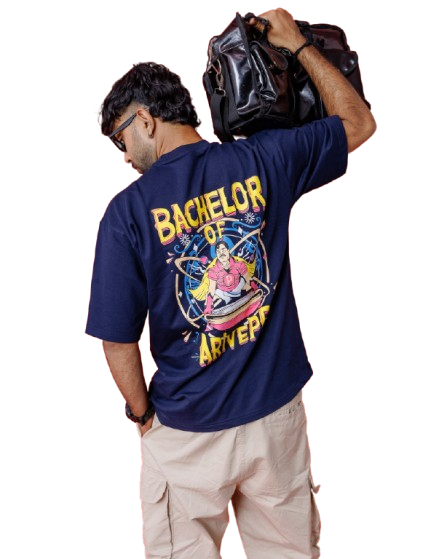Modern Culture In Fashion
Modern Culture in Fashion of Mangrezi
Mangrezi stands at the intersection of traditional Kerala culture and contemporary, global fashion trends. The brand’s unique approach redefines modern culture by blending iconic elements of Kerala’s heritage with the universal appeal of superhero aesthetics. Through this innovative fusion, Mangrezi creates a distinctive style that resonates with today’s dynamic, multicultural world.
1. Global Superhero Influence Meets Local Heritage
In modern fashion, global trends often take precedence, but Mangrezi has brilliantly fused the timeless allure of Kerala’s cultural icons with the excitement of superhero culture. This blend brings together the nostalgia and familiarity of superhero stories—universal themes of power, identity, and resilience—with Kerala’s local art forms, folklore, and vibrant celebrations. It captures the essence of modern culture, where people are increasingly seeking ways to connect with their roots while also embracing global pop culture influences.
2. Empowerment Through Identity
Modern culture emphasizes personal identity and empowerment, and Mangrezi taps into this sentiment by giving wearers the chance to embody the strength of superheroes while celebrating their Malayali identity. In a world where people seek to assert their individuality, Mangrezi’s designs allow them to wear their heritage proudly while embracing the empowerment that comes with modern fashion trends. The superhero-inspired clothing becomes a symbol of self-expression, pride, and confidence.
3. Fusion of Technology and Craftsmanship
The modern world is dominated by technology, and Mangrezi seamlessly integrates this with traditional craftsmanship. The designs are a testament to this fusion—where ancient Kerala art forms like Kathakali, Theyyam, and mural paintings are reimagined in a fresh, tech-savvy, and dynamic way. By using cutting-edge digital printing techniques and innovative design processes, Mangrezi brings a traditional cultural aesthetic into the modern fashion landscape, allowing timeless traditions to thrive in a contemporary world.
4. Minimalist Yet Bold Designs
While traditional fashion often embraces intricate detailing, modern culture leans towards minimalism, and Mangrezi strikes a perfect balance between the two. The designs are bold yet clean, allowing the cultural elements to shine through without being overly complex. The superhero theme is brought to life with strong, impactful visuals—powerful figures in dynamic poses—paired with sleek, minimalist backgrounds that ensure the designs stand out without overwhelming the viewer.
5. Sustainability and Ethical Fashion
Modern culture is increasingly focused on sustainability, and Mangrezi embraces this ethos by ensuring that its production processes are both environmentally and ethically responsible. The brand champions responsible fashion, using high-quality, sustainable materials and supporting local artisans, all while maintaining a modern outlook that aligns with global trends of conscious consumerism. Mangrezi’s designs don’t just look good—they are a step towards a better, more sustainable future.
6. Fashion as a Statement of Belonging
In today’s world, fashion has become more than just a way to dress—it’s a form of cultural expression and belonging. Mangrezi taps into this by crafting clothing that speaks to the modern wearer’s desire for connection and cultural pride. Wearing a Mangrezi design is not just about style—it’s about embracing a deeper connection to one’s roots, while also making a statement in a globalized world. The designs empower people to feel proud of who they are, where they come from, and the cultural heritage they carry with them.
7. Cultural Fusion as a Trend
Modern culture thrives on cultural fusion and mixing of different identities. Mangrezi represents this trend by blending the superhero genre with Kerala’s unique traditions. This fashion-forward approach resonates with a global audience—especially younger generations who value diversity, inclusivity, and cultural exchange. The fusion of Kerala’s local elements with modern design sensibilities creates a style that feels both timeless and cutting-edge, appealing to a wide array of people across cultures.
8. Influence of Pop Culture
In modern fashion, pop culture is one of the most significant influences, and Mangrezi taps into this by merging the world of superheroes with Kerala’s vibrant cultural narratives. This connection creates an exciting cultural dialogue that brings together the universal love for superhero stories with local legends, bridging the gap between contemporary trends and traditional tales. It reflects the growing trend in modern fashion of using pop culture to tell deeper stories about identity, heritage, and empowerment.
Conclusion
Mangrezi’s fashion represents the modern cultural landscape—where tradition meets innovation, heritage is celebrated with modern flair, and personal identity is empowered through clothing. By embracing the global influence of superheroes while staying deeply rooted in Kerala’s vibrant cultural heritage, Mangrezi creates a dynamic fashion that speaks to the modern individual’s desire for connection, individuality, and style. It’s a perfect blend of past and present, tradition and innovation—making Mangrezi a standout in the world of modern fashion.

